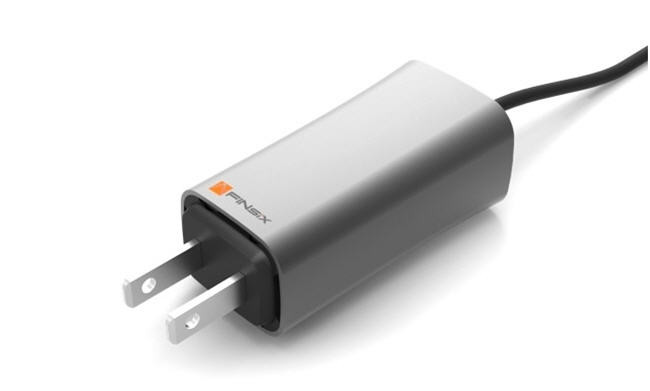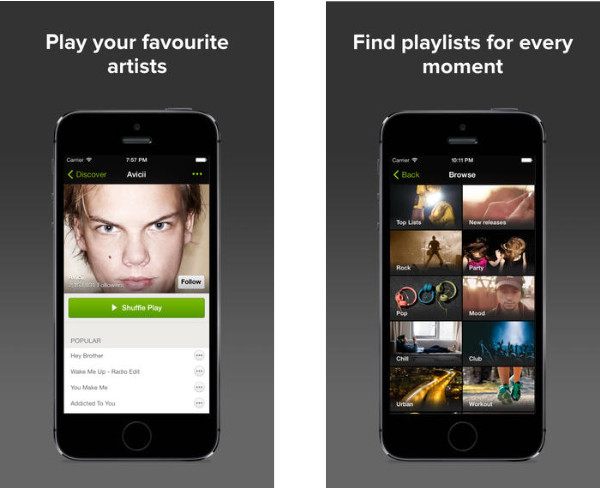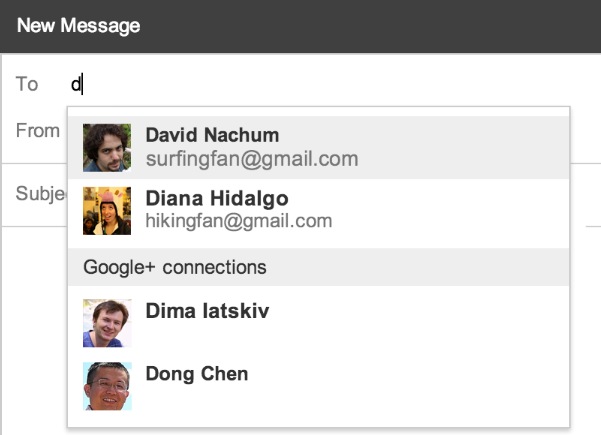Observatorio tecnológico del 1 al 12 de enero

Twitter continues to experiment in its platform with a view to improving its service to users, so we've caught up with a few of the new ideas it has implemented. The company appears to be trying the privilege account system, so that a user can recommend to his or her followers those users that he or she likes most, a bit like the #ff (followfriday) that people usually use precisely for this purpose. It was Drew Olanoff (current Yahoo Public Relations and Corporate Communications Director at Yahoo!) who caught the little blue bird with its beak in the pudding when he published a screenshot of his Android Twitter client that showed the option of marking one contact as favorite. In fact the idea would be similar to that offered in China by Weibo, where users can add links to their favorite accounts in their own social network profile. The "experiments" will surely be successful and we will shortly see the arrival of this option in our lives.
You probably have been waiting for the moment to arrive since the news a few weeks ago that Samsung was going to release its UHD 110 inch TV. Well relax because the TV set can now be yours. But there are various requirements before you can get the new Samsung TV in your living room. The first thing you need is space, and a lot of it, given that the television alone takes about three meters of your wall. Secondly, quite a bit of cash, because although the 110-inch model has not set price for now (it will be a surprise upon reserving it), its 85-inch equivalent was already priced at €35,000.
For now the Chinese market and a few select countries in Europe are the destination markets for which the few units will be produced, always upon request.

The fact that the majority of portable computers include quite voluminous transformers to charge their batteries could be about to change thanks to the work of MIT professor David Perreault. This expert in electrical engineering has devised an adapter for portable devices whose size is about a fourth of conventional AC adapters and that, among other features, also charges additional devices such as smartphones and tablets. The circuitry is designed to function at higher frequencies–between 30 and 300 MHz, a thousand times more than that of conventional adapters–which results in a 65 W adapter that can be used to charge notebooks with a much smaller accessory. A startup called FINsix will be charged with commercializing the accessories, and the latter will be on show at the forthcoming CES in Las Vegas. The first units will reach consumers in mid-2014. The new circuitry design makes it possible to reduce the size and cost of this type of transformer that converts between alternating and continuous current, and the result is an even smaller adapter than the ones used by Apple for its MacBooks, which have been the reference for some time in this area due to their size and features.
It turns out that Microsoft and Nokia are the main players in what is today the third platform on the market, Windows Phone. The bad news is that the Fins were in talks not so long ago with Android, which is perhaps the reason that Microsoft wants to open a second front next year. Over the last few days the first rumors have emerged of a possible agreement between Microsoft and Sony for the latter to create its Windows Phones over the course of the year. As usual, The Information does not include much in the way of detail. They could be the Vaio range smartphones which leads us to believe that they can each bring to the market a tablet with Windows RT or Windows 8, something closer to the Surface or Nokia Lumia 2520. But Sony is not the only company. The Information also speaks of the return of manufacturers such as HTC or ZTE to Windows Phone. Let's remember that the first generation of Windows Phone 7 was covered by a wide variety of Samsung, LG, Nokia, Acer or HTC and ZTC devices themselves and that of all of them only Nokia (with its wide catalog of Lumias) and Samsung (with the ATIV S, having experienced some success due to its price) have kept their offer on the market. In principle Nokia should continue to be the main hardware provider offering Windows Phone, and more so now that its acquisition by Microsoft is about to be completed. A Windows Phone by Sony will be interesting to see given that the company has not yet tried this system and that over the last few years it has made some of the best smartphones on the market. It is an important year ahead for Microsoft.
Following a lot of hearsay on the matter the last few days, Intel has confirmed the existence of its Dual OS platform. The company aims to use it to give manufacturers the possibility of increasing their offer for devices with a double system, Windows and Android, to the market. The confirmation was given by Brian Krzanich, Intel CEO, during the conference that preceded CES. He didn't provide details and limited himself to a brief mention of technology that makes it possible for Intel processors to make devices able to change between Windows and Android at the press of a button. From the podium, Krzanich barely showed a few seconds the process of changing instantly between systems on a portable devices. But Intel is not the sole company with the idea of supporting the two systems simultaneously. Another chips manufacturer, AMD, has also announced its collaboration with Bluestacks to make Android work on Windows devices. It's not the first agreement between the two companies, but thanks to the new association they hope to go one step further and achieve the start of Android apps from the Windows 8 start screen as if they were native Windows programs. Contrarily to the Intel program, which seems to maintain the two systems separate, AMD aims to include an ARM chip in its processors so that devices can directly run native ARM code. Up to this point Bluestacks had virtualized an ARM environment to make Android applications work in x86 processors. With the AMD solution this would no longer be necessary and Android applications would be executed with no need to emulate another system. Manufacturers seem happy with the idea and several have already displayed their offers of this technology. What remains to be seen is the degree to which Microsoft and Google embrace these systems, which don't seem to be the stuff that the better dreams of either company are made of. In addition, it will also be necessary to check the level of acceptance that these devices get on the market.
Apple has just published some data on the performance of the App Store over the last year and as usual the results are a downright shock. During 2013 we users of iPhone, iPad, and iPod touch paid 10 billion dollars in applications from the store with the apple symbol, including almost one billion only during the last month of December. During December we users downloaded close to 3,000 million applications from the App Store, converting that month in the most successful of its history, and elevating the value of the check paid by Apple to developers to 15 billion dollars.
"We would like to thank our customers for having made 2013 the best year in the history of the App Store" commented Eddy Cue, senior vice-president of Internet software and services at Apple. "The offer of applications for the holiday season was incredible, we are anxious to see what the developers will create during 2014."
In the press release published by the company, Apple also highlights the role played by the iOS 7 launch in all of this, revitalizing the applications ecosystem with its user interface redesigned and the over 200 new characteristics and APIs that the developers have been able to improve in terms of appearance, efficiency, productivity of their apps, mentioning a few concrete examples such as Evernote, Yahoo!, AirBnB, OpenTable, Tumblr, Pinterest, and American Airlines. In 2013 we have seen unexpected successes such as Heads Up by Ellen DeGeneres, Moves by ProtoGeo,Impossible Road by Kegin Ng, and Afterlight by Simon Filip. And although many of the greatest successes this year are titles such as Candy Crush Saga, Puzzles & Dragons, Minecraft, QuizUp, and Clumsy Ninja, all from large developers, Apple points to some new stars that have arose recently and which we will have to pay attention to during 2014: Duolingo (United States), Simogo (Sweden), Frogmind (United Kingdom), Plain Vanilla Corp (Iceland), Atypical Games (Romania), Lemonista (China), BASE (Japan) and Savage Interactive (Australia). The App Store has over a million applications for iPhone, iPad, and iPod touch in 155 countries all around the world, and over 500,000 native applications for the iPad.
Motorola has started today to send press invitations to various communications media, inviting them to a new event to be held in London on 14 January. The event is a bit of a surprise and during its celebration a new member of the Motorola line will be "welcome" into the European family.The message comes with "Join us in the following leg of Motorola's journey." Motorola offers no lead as to what this device might be, although we can already make an educated guess. In August the company revealed that Motorola would bring new devices to Europe, so that although Moto G is present in this continent, there is a very popular smart phone that has not been here so far: the Moto X. To find the Moto X in Europe would be very well received by the majority of users who has seen how a medium-range module such as Moto G had a spectacular start. The Moto X was already reduced in price in the US to 399 dollars and those from whom Moto G is short of what they need, to receive the Moto X with a better screen, its very special processor, and this highly competitive price would amount to excellent news in order to put Motorola back on track with its Moto range. The Moto X personalization options would also make the news in Europe given there are few brands that offer smartphones for which the case can be chosen among so many options. We'll be watching that event in Londres.
Biz Stone, co-founder of Twitter, presented his new project officially today. The name of Jelly is code for an application for mobile devices (for ahora only iOS and Android) that allows you to ask question in public. The idea is that your contacts in the social networks help you answer them. Compared to other alternatives, this is one of the advantages: here it is your friends who are answering, so in theory their answers must be, a priori, more useful than that of any unknown person. Although this service can sound very similar to already existing ones (it is impossible not to mention Quora), the idea behind Jelly is to make it all more visual. Therefore, and in this spirit "an image is worth more than a thousand words", with each published question they offer the possibility of taking a photo. In addition, it is a Q&A service targeted for mobile devices, where concrete answers are more useful than the long explanations that we see in other desktop services. But, does the existence of such a specific service make sense? Stone is clear on this one and provide an example: if you go walking on the street and see something that you don't recognize or about which you want more information, you can take a picture of it and ask your contacts. In this specific case Jelly can be useful but with other simpler methods (such as directly asking in any other social network) he has his work laid out before him to convince users that his app is indispensible.

So they said, and so they did. Spotify has today made available to all its users an update of its iOS application with which we can start to enjoy the free reproduction of songs without depending on a computer with OSX. The iPad version affords us the full experience: the creation of playlists, radio, to explore recommended artists, discover albums, navigate by styles... the only drawback is that we will have ads every few songs. On the other hand, on the iPhone we will only be able to reproduce songs randomly of a single artist without the capacity to choose anything specific.
Vodafone and Orange confirm the start of the integration of part of their mobile networks to minimize costs thanks to their planned sharing of sites in lesser populated areas and therefore face the similar agreement between Movistar and Yoigo that began to produce results last December A new agreement between both operators in addition to that signed for the rollout of fiber to six million homes o the ones they announced in 2009 and extended in 2012 to share equipment at 7,000 sites. Vodafone and Orange are planning to take down one thousand sites each to share the tower, electrical power, or security with its rival in less populated areas while antenas or radioelectric equipment will continue to belong to each operator for the independent management of traffic. Therefore, the agreement will initially affect a total of 2,000 sites at which both operators will install their own equipment and share the rest of costs although collaboration may be extended to new sites once the real saving has been checked after amortizing the costs of disassembly, relocation, and connection of the equipment. If it makes economic sense, the agreement could be substantially extended to more sites if we take into account that Vodafone has 16,000 antenas installed and Orange about 14,000.

Merely observing the progressive integration of Google services one could suppose that this time was bound to arrive; in fact, the only surprising aspect of the news is that it has taken so much time to happen. Google has deployed a new update for Gmailand Google+ thanks to which its users will be able to send each other e-mail even though they've not exchanged e-mail addresses, thereby facilitating communication in one's circles. From now one, when you want to write an e-mail from Gmail, the list of suggested recipients will also reflect your contacts in Google+. Naturally, Google will offer the option of deciding which user circles are allowed to write to you, reducing the risk of being spammed/harassed by people whom you barely know , although if you want to, you can also block the receipt of all e-mails originating in G+ (an option that will be clearly taken up by a lot of people). As for your personal mail–as you probably will be fearing for your privacy–none of your Google+ contacts will be able to see it until you write them a message, and the same would be true of their addresses. As usual, the update will be disseminated all over the planet over the last few days, so you may still have to wait a while to see the changes. Once the service is activated, the messages that your Google+ contacts can send you will be automatically stored in your Gmail folder for social networks.
Also during these first days of January 2014, Las Vegas has hosted the CES, the International Exhibition of Consumer Electronics. Days in which brands have presented a multitude of gadgets. We leave you the links to endgadget with the presentations of each one of the days so that you may consult it in the most orderly way possible given that this fair is pure presentations madness.
- Summary of the 1st day
- Summary of the 2nd day
- Summary of the 3nd day
- Summary of the trade show
- The five tendencies that dominated the CES: 4k televisions, curved screen televisions, wearables, Internet of things, manufacturers present but only in spirit.
